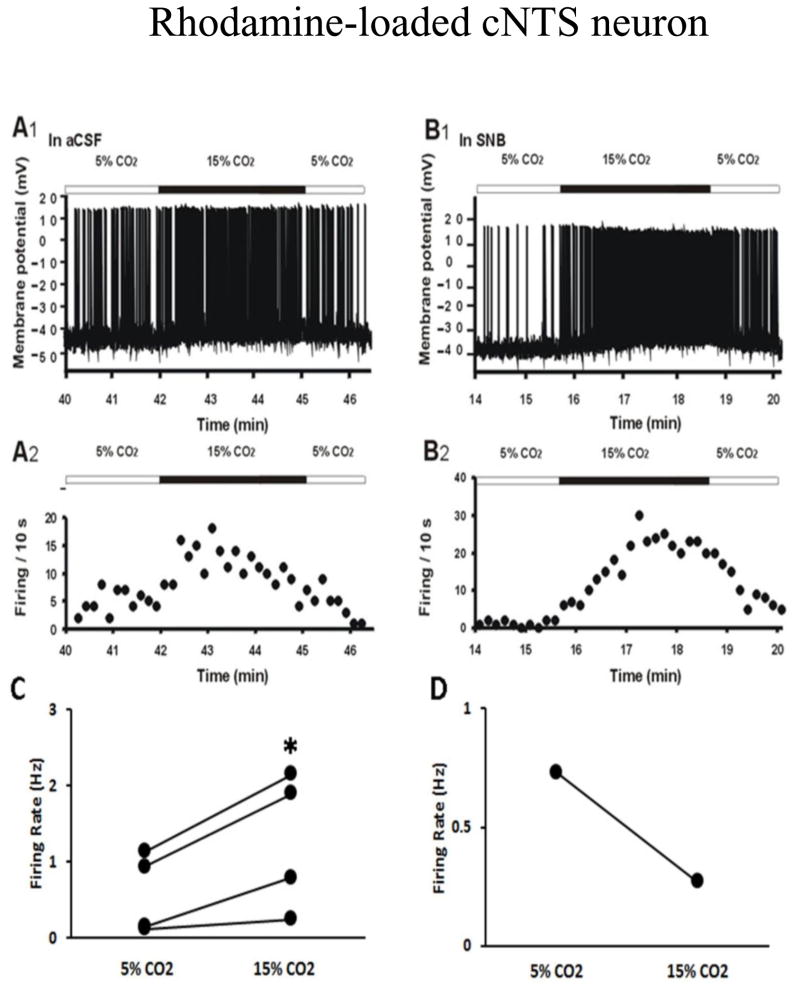Figure 9.
A: The firing response to hypercapnia (whole-cell patch in current clamp mode) of a neuron from the cNTS that contains rhodamine beads retrogradely labeled from the LC, the site of rhodamine bead injection. A1: The firing rate response to hypercapnic acidotic solution (15%CO2) in the presence of aCSF; A2: The integrated firing rate (action potentials per 10 seconds) in normocapnic (5% CO2) and hypercapnic (15% CO2) solutions; B1: The firing rate response of the same neuron as in A to hypercapnic acidotic solution (15% CO2) in the presence of synaptic block medium (SNB); B2: The integrated firing rate of the same neuron as in A in normocapnic (5% CO2) and hypercapnic (15% CO2) SNB solution. Note that hypercapnia reversibly increased the firing rate of this cNTS neuron that projects to the LC even in the presence of SNB solution; C: Summary of the effect of hypercapnia in SNB solution on firing rate (Hz: action potentials per s) in 4 rhodamine-labeled cNTS neurons; D: Hypercapnia caused reduction in firing rate in 1 rhodamine-labeled cNTS neuron.

